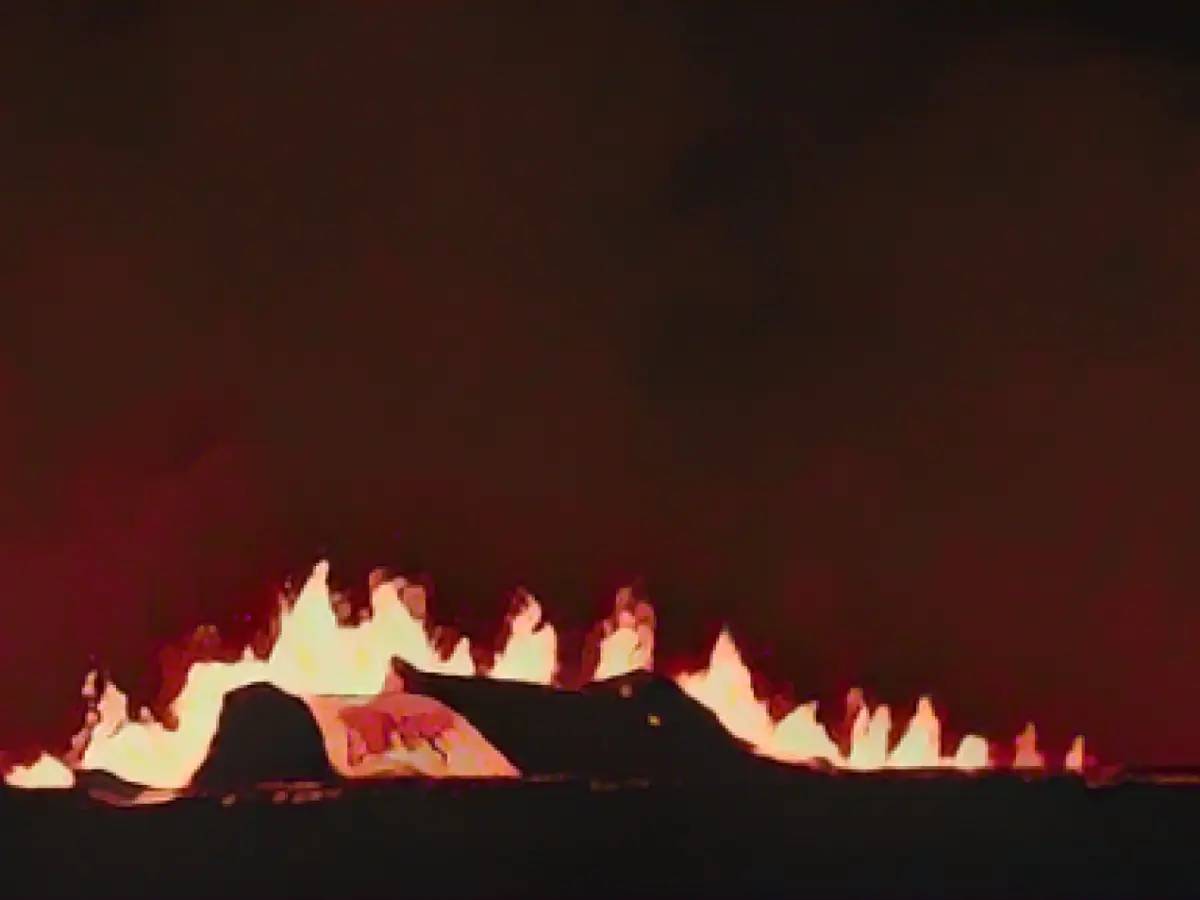It seems like the volcanic activity in Reykjanes, Iceland, is showing signs of stability, as it did during past eruptions. The latest eruption near Grindavik, which started late Monday, has already sparked concerns among weather experts due to a series of earthquakes in November. The fissure caused by the eruption measures four kilometers in length, and authorities have declared a state of emergency, evacuating the village of Grindavik with a population of 4,000.
Despite the orange alert for aviation, the capital's international airport in Keflavik has reported no disruptions in take-offs and landings. This latest eruption marks the fourth in Iceland within the past two years, leading some volcanologists to predict that the new cycle on the Reykjanes peninsula could last for decades. Iceland, being the largest and most active volcanic region in Europe, lies on the Mid-Atlantic Ridge, separating the tectonic plates.
Although previous eruptions have drawn significant tourist interest, the head of Iceland's civil protection has cautioned against treating the current activity as a tourist attraction. The excitement from past eruptions, which attracted over 680,000 visitors, is discouraged in light of the potential dangers and unpredictable nature of these events.
Historical activity, tectonic activity, magma accumulation, seismic activity, geodetic models, and volcanic unrest are all factors influencing the long-term predictions for volcanic activity in the Reykjanes Peninsula. While it remains impossible to accurately predict the timing and magnitude of future eruptions, the Icelandic Meteorological Office closely monitors ongoing developments to mitigate potential risks.






